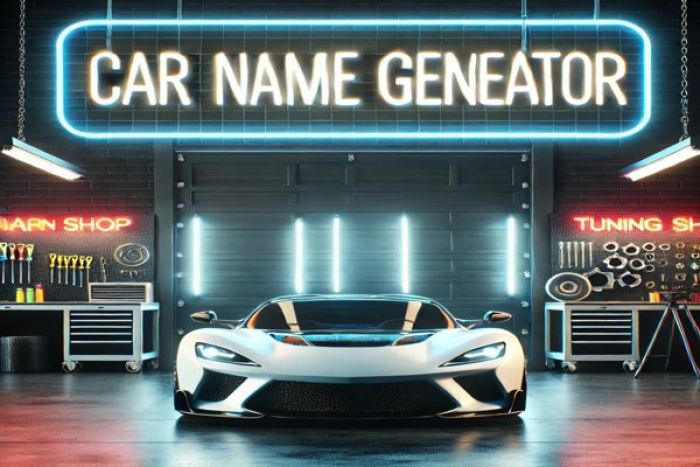The most common causes of a vehicle starting with starter fluid and then dying immediately include issues with the fuel (supply), ignition, or security system. We'll explain them along with other reasons your car is acting this way.
Engine stalling issues highlights
- Level of urgency:High
- Can you drive?Obviously, no
- DIY inspection:Possible but very complicated
- DIY repair:Impossible
- Price for repair:$350 - $900
- Common Reasons:Fuel or air supply problems, immobilizer
- Ways to fix:Professional inspection is needed, checkif there is fuel in the tank

What Is Starter/Starting Fluid?
Starter fluid is a very volatile (flammable) liquid that is applied to internal combustion engines to jump-start an engine or resolve various starting issues.
The value of this product is in its highly combustible properties which can rapidly fire up the cylinders into propulsion. It's typically packaged in an aerosol spray can, meaning that it's applied by spraying.
Carb (carburetor) cleaner or brake cleaner can be used in place of starting fluid. Although this isn't recommended because the cleaners aren't manufactured for direct application to engines. They should only be used in dire situations.
When Can You Use Starter Fluid?
- Ineffectiveness of regular starting processes
- Engine stalling in cold weather
- Engine flooding
- Troubleshooting procedures for engine stalling (not advisable)
- Engine revival, especially for cars that haven't been used in a long time
- Low fuel pressure
Starter Fluid Engine Compatibility
Starter fluid is most suitable for four-stroke engines. It may sometimes be utilized for direct injected diesel engines or lean burn spark engines that are powered by alcohol fuel. And it's applied more in carbureted engines than in fuel injection systems.
Using this fluid in diesel engines is very risky because of their preheat systems. For example; the air intake heaters or glow plugs. The fluid may pre-ignite, leading to an explosive reaction that can damage the engine or render it irreparable.
It's not advisable to use this product regularly for certain two-stroke engine types due to its lack of lubricating agents. Starting fluid is also a powerful solvent that can make the engine oil in a two-stroke system weak. This engine type uses fuel that has already been mixed with oil.
WD-40 was utilized in the past as a starter fluid substitute in two-stroke engines due to its lubricating properties. But its manufacturers eliminated its combustible properties. It shouldn't be thought of as an alternative anymore.
Four-stroke (four-cycle) engines are commonly featured in cars, motorcycles, and generators, etc. Their pistons complete four separate strokes when rotating the crankshaft.
On the other hand, two-stroke engines are typically made for smaller machines like lawnmowers, scooters, and so on. Their pistons complete two strokes when rotating the crankshaft.
Usage Precautions for Starter Fluid
Your engine should be allowed to cool down before spraying because the heat may make the fluid burst into flames. Maintain a safe distance from the engine while spraying for ONLY 2-3 seconds. Point the nozzle straight into the target area. And be careful not to spill it on other areas or use too much of it at a time.
Wrong or careless application of this fluid can cause your engine to backfire or catch fire. You may sustain burns if you're within the range of the flames. A mask, pair of gloves, and eye-protection goggles can be worn as precautions to be safe from toxic fumes and possible flames.
It's also not safe to use starting fluid consistently as it can lead to engine damage in the long run. The repeated explosive force when ignited will be too much for the engine to withstand. The piston heads or rods are prone to sustaining damage from such a reaction. So use this product only as a last resort!
Methods of Applying Starter Fluid
- Spraying into the engine intake which is close to the air filter.
- Spraying into the engine's spark plug hole or carburetor bore to provide extra fuel to the combustion cylinder quickly.
Reasons Your Car Starts with Starter Fluid Then Goes Off Immediately
Hopefully, you'll be lucky to pinpoint the source of the problem from a diagnostic scan alone. But if not, these are the reasons to consider.
1) Ignition Problem
Your car's ignition system produces sparks for the air-fuel mixture in the combustion chamber to be ignited. Faulty batteries or spark plugs can cause the spark to be inadequate for combustion. The vehicle will die or won't start at all. Spark plug wire malfunctions/detachments can also make your engine misfire.
2) Fuel Pump or Injector Problem
Any leak in the fuel pump or injection system will make the air-fuel ratio unbalanced. It will result in your car having not enough fuel to keep the engine running after starting. These parts may get clogged as well.
3) Faulty Fuel Rail Pressure Sensor
The engine control unit (ECU) interacts with the fuel injector via the fuel rail pressure sensor to monitor and regulate fuel pressure. So there'll be a problem with the engine getting an optimal supply of fuel when the sensor goes bad.
Note: Other sensors that can result in a starting problem when they go bad or get dirty include the mass airflow (MAF) sensor, crankshaft/camshaft position sensor, engine coolant temperature (ECT) sensor, etc.
4) Worn or Blocked Fuel Filter
It's normal for fuel filters to get clogged or worn after a long period of use. And that will lead to engine troubles such as stalling. The filter keeps dirt and corrosive particles away from the fuel passing to your engine. You can guess what will happen when such particles find their way into the engine.
5) Engine Control Unit (ECU)/Engine Control Module (ECM)/ Powertrain Control Module (PCM) Problem
An ECU manages the major parameters of your engine and its programming. It's only right to expect your engine to stall when this system malfunctions or fails. This issue is usually followed by many electrical system faults. For example; sensor reading problems.
6) Anti-theft Alarm System Problem
Ensure that the anti-theft system doesn't need to undergo reset (relearn procedure). Starting problems may occur when there's an issue with this feature such as it not deactivating even after you use the proper keys for the ignition. It has to turn off for power to be sent to your fuel pump.
7) Malfunctioning or Damaged Carburetor
Carburetors are utilized on old-model cars that don't feature electronic fuel injection. So they're in charge of helping the vehicle to adjust its air-fuel ratio just like an ECU does. A bad or wrongly set carburetor will definitely have negative effects on the vehicle's fuel pressure.
8) Critical Vacuum Leak
A sign of a major vacuum leak is a significant hole in your car's air intake system at the back of the mass airflow (MAF) sensor. This will let unregulated air into the engine and cause an imbalance in the air-fuel ratio. The vehicle will shake when it starts and go off after. Your car may still stay on if the leak is a minor one.
9) Slipped Timing Belt/Chain
Cam timing will get thrown off when a timing belt/chain skips a tooth as a result of looseness caused by a tensioner flaw. This will mean bad timing for the opening of the intake and/or exhaust valves. Wrong cam timing is a source of misfires, rough idling, and of course, engine stalling.
Note: Speaking of valves, a defective idle air control (MAF) valve or exhaust gas recirculation (EGR) valve can also hinder your car from running after starting.
General Starting Issue Troubleshooting Tips
Perform vehicle diagnostics with a scan tool before conducting physical checks. This is because of how many possibilities you have to rule out. It may help you in narrowing down the problem to a system or area in your car. And you can begin to troubleshoot the related parts beginning with the simplest.
Scanning as the first step will help you avoid the risks of engine flooding and also give the starter some time to rest. There's also the potential to make a minor issue worse if you keep trying the starter or go DIY without the needed expertise.
Physical examinations should be done with the aid of a vehicle owner's manual or a mechanic. The latter is the better choice, of course, because such inspections can get prolonged or tedious. So many parts or areas require adequate technical know-how which you may not possess.
Conclusion
Check your vehicle owner's manual to be sure that your car's engine can handle starter fluid before using it. And you should quickly look for the source of the starting fault if the fluid proves to be ineffective. The scenarios described on online car repair forums may help, apart from the tips in this post.
About the authors
The CarAraC research team is composed of seasoned auto mechanics and automotive industry professionals, including individuals with advanced degrees and certifications in their field. Our team members boast prestigious credentials, reflecting their extensive knowledge and skills. These qualifications include: IMI: Institute of the Motor Industry, ASE-Certified Master Automobile Technicians; Coventry University, Graduate of MA in Automotive Journalism; Politecnico di Torino, Italy, MS Automotive Engineering; Ss. Cyril and Methodius University in Skopje, Mechanical University in Skopje; TOC Automotive College; DHA Suffa University, Department of Mechanical Engineering






Add comment